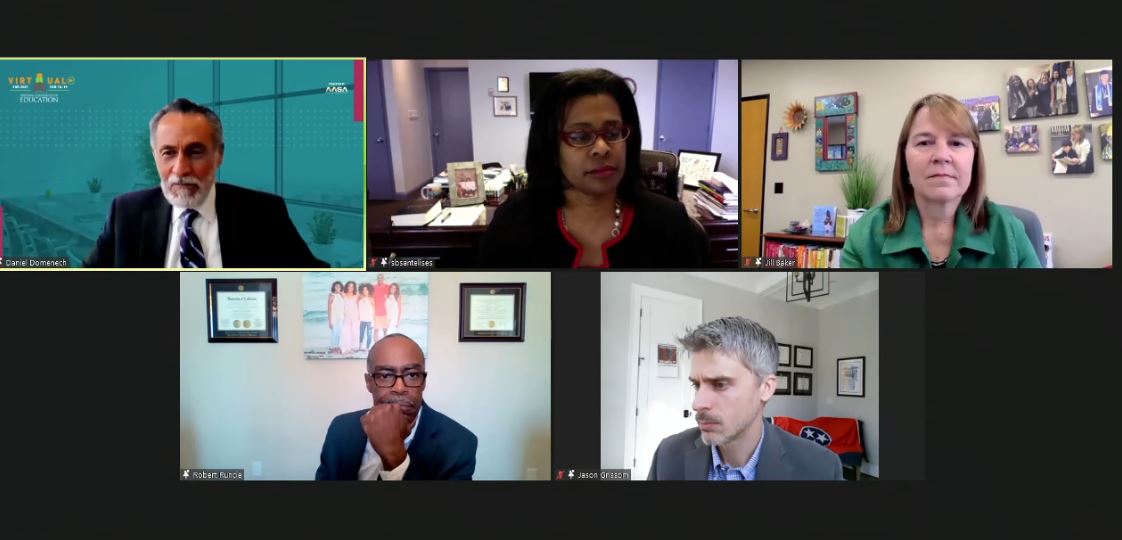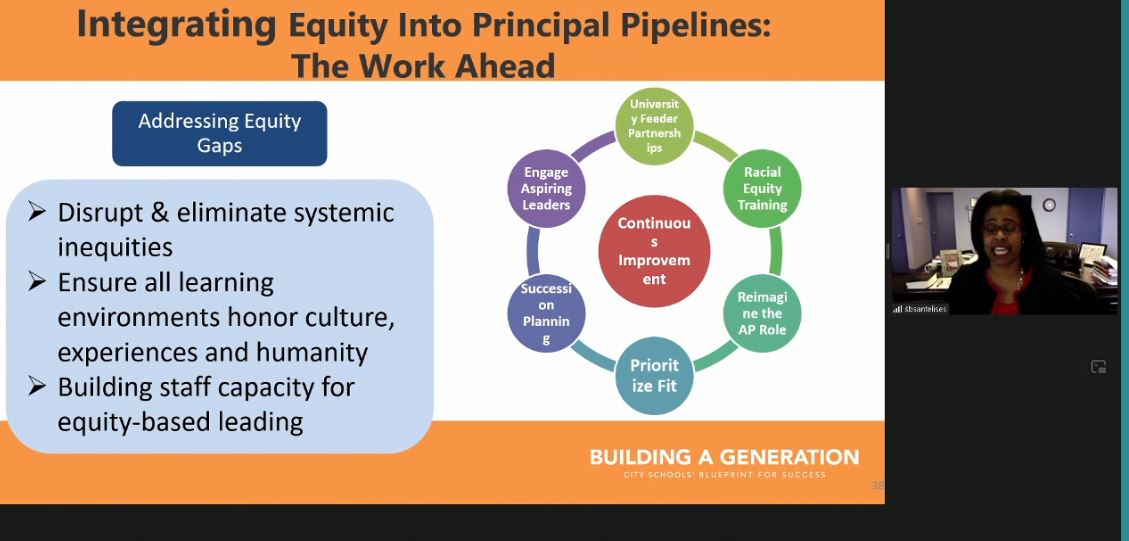By Morgaine McIlhargey |
A report titled “How Principals Affect Students and Schools: A Systematic Synthesis of Two Decades of Research” released Tuesday by the Wallace Foundation found that training on equity and inclusion is imperative to successful leadership in education.
Jason Grissom, faculty director of the Tennessee Education Research Alliance and the Patricia and Rhodes Hart professor of public policy and education at Vanderbilt University, served on an AASA national conference panel with several superintendents on Friday, Feb. 19, that addressed some of the findings for a school leadership audience. Grissom was part of the research team commissioned by the Wallace Foundation.
Grissom shared the report’s main findings during the session titled “Building an Equity-Centered Leadership Pipeline with Intentionality.” It was moderated by AASA Executive Director Daniel Domenech.
“There’s strong evidence that having an effective principal contributes substantially to student achievement,” Grissom said. “The magnitude and scope of principal effects suggest the need to really invest in improved principal preparation and support, and the field needs a continued reorientation toward educational equity, meaning training principals to approach their work with an equity lens and to prioritize the needs of an increasingly diverse student body.”
Several education leaders each shared how they have been implementing equity-centered leadership pipelines in their respective school districts.
Jill Baker, the first-year superintendent of Long Beach Unified School District in Long Beach, Calif., said her district trains principals through an annual coaching-based evaluation program. It teaches them about equity, among other ideas and skills, in an open and interactive environment.
“We’ve built a common language and a culture, that across supervision, central office, principals with teachers, that now there is a language of support and a culture that really values coaching as a way of being,” said Baker, who has worked in Long Beach schools for 28 years. “When you move something from transactional or technical change into this adaptive realm, it has the opportunity to impact everything that goes on in the system.”
Sonja Santelises, CEO of Baltimore City Public Schools in Maryland, said her district adopted a racial equity policy in 2019. Based on feedback from focus groups, the district decided to focus on access, accountability, selection bias and transparency in its leadership pipeline. Going forward, Santelises created a foundation based on three main ideas.
“We try to highlight these three basic areas when we look at our continuous improvement,” Santelises said. “One is the question of how are we really disrupting and eliminating systemic inequities when we see them? Then, this idea of a learning environment that honors culture and experiences, as well as humanity. Then third, building staff capacity for equity-based leading.”
Superintendent Robert Runcie of Broward County Public Schools in Fort Lauderdale, Fla., said his system uses “principal cohorts,” groups of a dozen principals from a diverse range of schools that visit each other’s facilities, collaborate and share best practices. Cohort supervisors give the principals lessons on equity.
Runcie found this equity training not only has an effect on the school environment, but on the community as a whole.
“Building an equity-centered principal pipeline is absolutely critical,” said Runcie, who leads the nation’s sixth-largest school district. “They’re able to connect better with your communities. That’s extremely important because it’s really around building trust and engagement with families and the community. That’s how you help to drive your successful schools.”
(Morgaine McIlhargey is a junior magazine journalism major at Syracuse University’s S.I. Newhouse School of Public Communication and an intern with AASA’s Conference Daily Online.)
